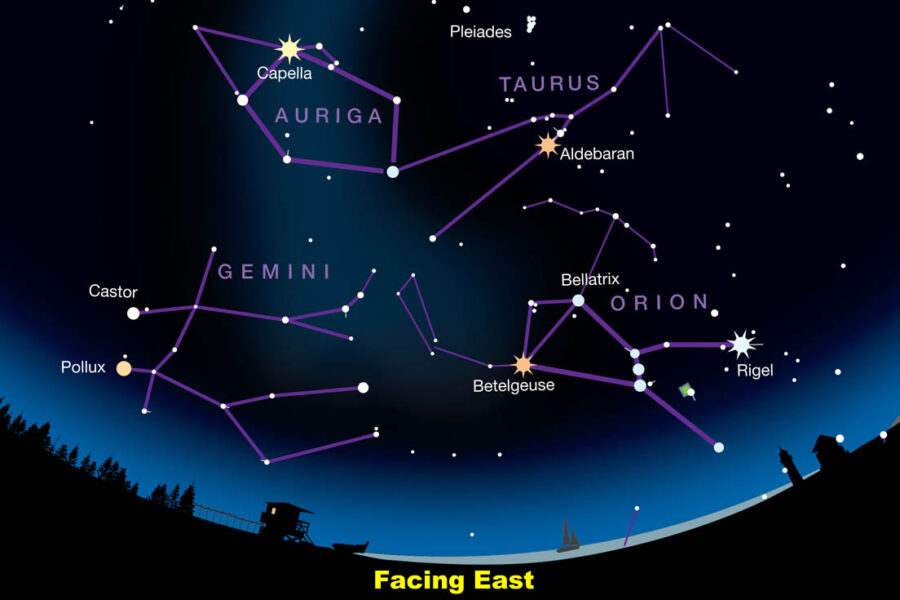December’s solstice brings the longest northern nights, and it’s a busy month for stargazers: the Geminid meteors, a visit from Comet Leonard, and a plethora of bright stars and constellations.

Listen Here:
Podcast: Play in new window | Download
Subscribe: Apple Podcasts | Google Podcasts | Spotify | Email | RSS | More
This month’s night sky features two appearances that are sure to capture your attention. One is the annual display of Geminid meteors, which always challenges August’s Perseids for the title of “Best Meteor Shower.” Our Sky Tour podcast gives you all the details you’ll nee for when and where to look.
The second celestial headliner is Comet Leonard (officially designated C/2021 A1), which was discovered last January and is just now reaching its peak brightness. With luck it’ll become bright enough to spot by eye — just as Comet NEOWISE did last year. So where and when should you look for Comet Leonard? You guessed it: This month’s Sky Tour has all the details.
The western evening sky is packed with planets right now. As twilight gives way to full darkness, Venus is unmistakably bright low in the southwest. Well to its upper left you’ll encounter a bright, easy-to-spot “star” that’s actually the planet Jupiter. And halfway between Jupiter and Venus is a third planet. Can you guess which one? Listen to this month’s Sky Tour podcast, and you’ll know for sure!
Around 8 p.m. early in December, and by 6 p.m. at month’s end, you can take in what S&T columnist Fred Schaaf calls a “tower of brilliance” that starts near the horizon and climbs all the way to overhead. Start low down by finding Orion. To its left are the twins of Gemini, anchored by the stars Castor and, below it, slightly brighter Pollux. That’s the general area from which the Geminid meteors will seem to originate as they zip across the sky.

Sky & Telescope
Above Orion is Taurus, the Bull, whose angry eye is the reddish superstar Aldebaran. Look a little more than one fist above Aldebaran for a fuzzy patch of light. This is the Pleiades, a tight little nest of stars. Sometimes they’re called the Seven Sisters. If you’ve got decently sharp eyesight, you’ll see that the six brightest stars of the Pleiades form a tiny dipper shape. Don’t confuse this with the real Little Dipper, which is much bigger and located due north in the sky.
And of course there’s much, much more to see in the night sky during December. It’s a great month to track down some constellations you might already know and learn to spot some new ones. So download or listen to this month’s Sky Tour podcast! It’s perfect for anyone who wants a fun and informative guided tour of the celestial sights that are overhead.
 1
1
Comments
Rod
December 1, 2021 at 7:44 am
I was able to view comet Leonard this morning using 10x50 binoculars. I posted a note here https://skyandtelescope.org/astronomy-news/observing-news/this-weeks-sky-at-a-glance-november-25-december-4/#comment-381491
You must be logged in to post a comment.
You must be logged in to post a comment.